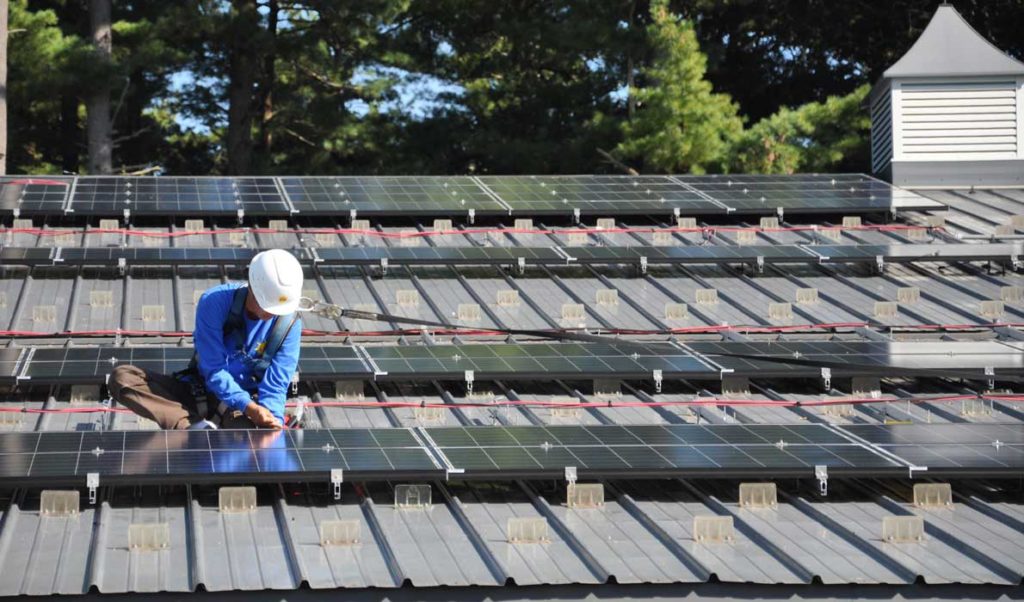Editor’s note: Bill Behrens is the founder of ReVision Energy, based in Liberty. Behrens was a guest on the “Common Ground Radio” program on WERU-FM on Sept. 4, where the topics included energy produced by photovoltaic technology, which Behrens’ company installs. Homeowners can let the electricity power the building and, if there is excess, it can be made to flow into the power grid, with the homeowner getting credits for using electricity provided by the utility. What follows are some of his comments during the radio program.
Solar a remarkable technology. The modern solar electric panel is made out of some essential, but very common and ordinary elements from our environment. The major components are the aluminum frame and glass covering on the surface; silicon, which is derived from one of the most prevalent elements on the planet; a very small amount of “rare earth” elements which are used to activate, in a sense, the silicon cells themselves; a very small amount of silver and copper in the cabling and wiring; and a very small amount of petroleum products that are used in the backing sheets and junctions boxes and wire insulation.
Internally, sunlight is raising the energy state of the panel surface and that higher energy state produces free electrons. If you give those free electrons a circuit to pass through, then they produce power.
It still amazes me every time we hook up a house, a cottage, a business; you flip the switch and can see the electric meter start to turn. And there’s no moving parts that you can see, there’s no noise, no sound—it’s pretty close to the most amazing technology we’ve ever come up with.
All of us alive today are having the pleasure of seeing what is likely the most game-changing transition in human history, and that’s the transition away from fossil fuel and towards renewable energy and renewable fuels.
It’s very similar to the transition away from horse power to fossil fuel. It’s a radical transition. And in that transition, you’re going to have a lot of steps along the way that might feel difficult and unpleasant, but in the end, the next reality is going to be a whole lot better than the one before, just the way the fossil fuel reality was a whole lot better than the horse power reality, for most people.
Part of human culture, part of what makes us a pretty special species is that we actually embrace change; we make changes and we see what happens.
That’s easy to say, to think we all may look back in 30 years and say, “Gosh, why did we think solar power wouldn’t work in the state of Maine?” We still have customers who are skeptical solar power can work here. Twenty years ago, at the Common Ground Fair, 90 percent of the people who came to our booth had that point of view and now it’s down to 5 percent to 10 percent. That’s the kind of social transition happening here in Maine.
Solar power is likely to be the most dominant form of renewable energy in the future, and that’s because it’s so simple. It works everywhere, has very little maintenance and the embedded energy in solar equipment—the energy used to make the components—is much less than other renewables. Solar equipment reproduces the energy of its own manufacture in about a year and a half. For a wind farm, it’s about seven years.
Now our industry is waiting for energy storage and it’s a really important part of this energy transition; the other shoe has not yet dropped. We don’t yet have the solution to energy storage. It’s close, and we’re getting much closer as the years go by.
I think for all users of renewable energy, whether it’s for a home or a farm or a utility, the coming energy storage transition is going to be remarkable.
Certainly, within five years we’re going to see a major shift in the adoption of energy storage.





